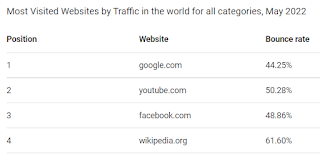The pandemic has taught us that we can be flexible with structures for learning. The situation we are currently resolving is balancing the best widely accessible technology offered with a sentiment of "getting back to normal". A path must be created from now to the future.
One path forward into the future domain is the simple use of video and audio. These devices can be deployed for asynchronous use, yet embody a human who invested care and time to produce them for their end users. To demonstrate the power and current utility of such a device, consider that YouTube is the 2nd most visited site on the planet behind Google.
Services such as recording a Google Meet or using Loom (owned by Google) allow for the recording of a person to give feedback in a more human and engaging way. Consider that Google has integrated Loom for recording video into Google Chrome and Gmail, illustrating that Google is fortifying a need for users to be able to connect with audience in a way that is both personal and present. The written word, I would say, is more general and timeless, if such a scale existed.
We often hear about the power of bringing a face with the name, which I think illustrates the power of using video (face) in conjunction with the written word (name) as an integral part of collaboration. To push the conversation into the teaching and learning domain, consider that OneNote, Google Classroom, FlipGrid and a growing amount of Learning Management Systems and Tools incorporate processes to video feedback.
As we think about what personalization means to our students, we will find ourselves getting more personal with our own content and paths of content delivery because the technology now exists to do so.





No comments:
Post a Comment